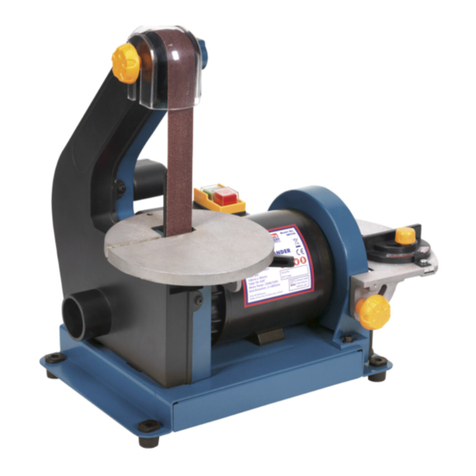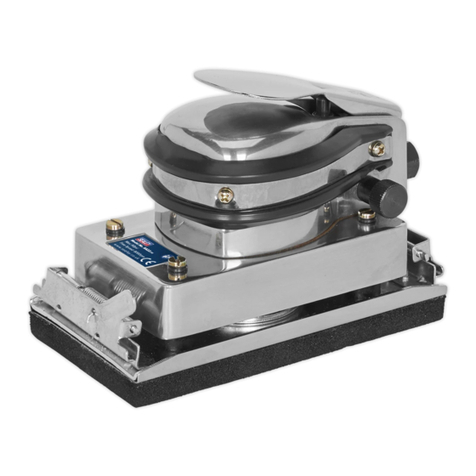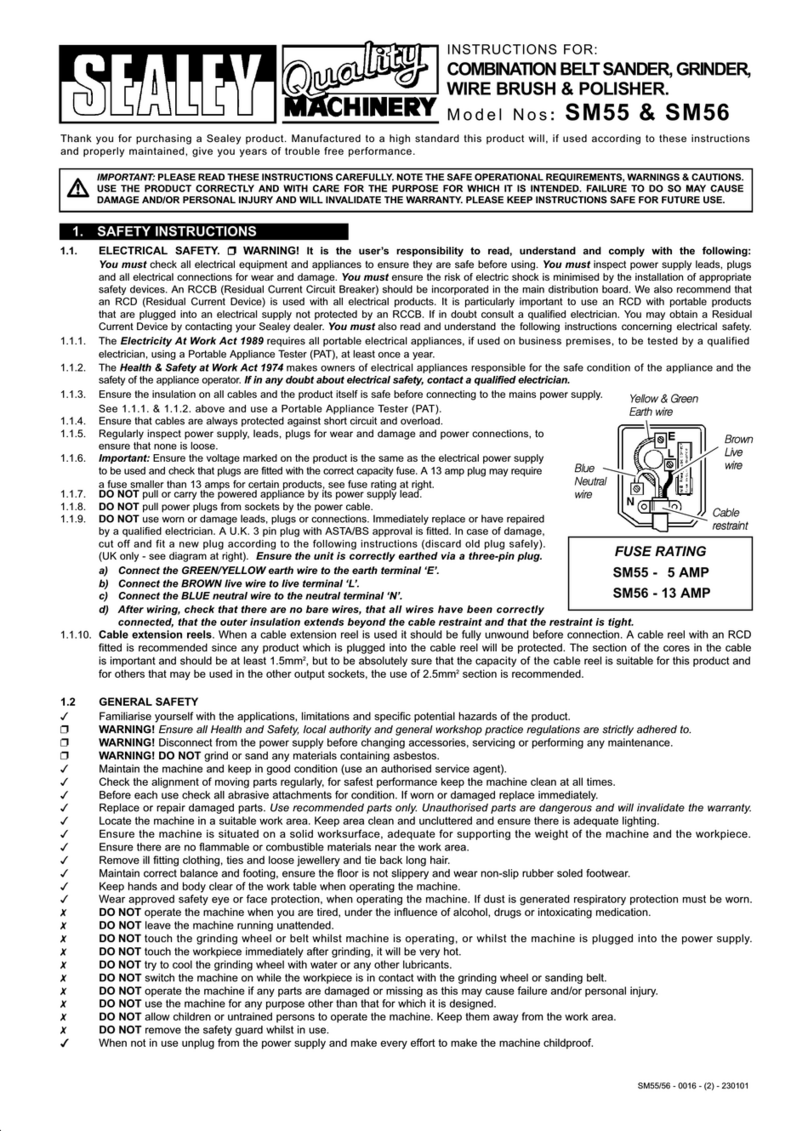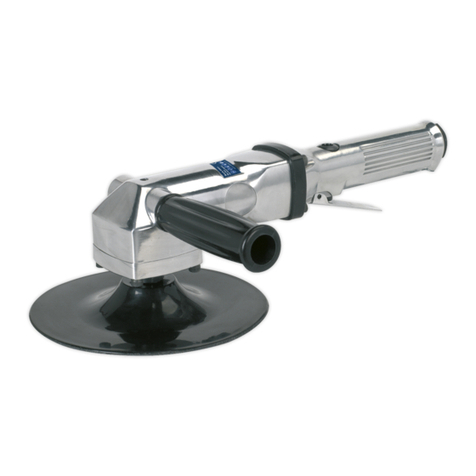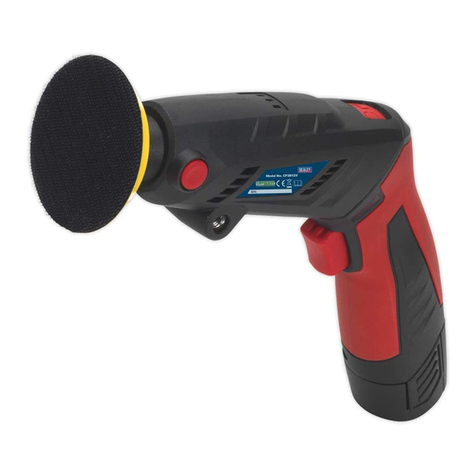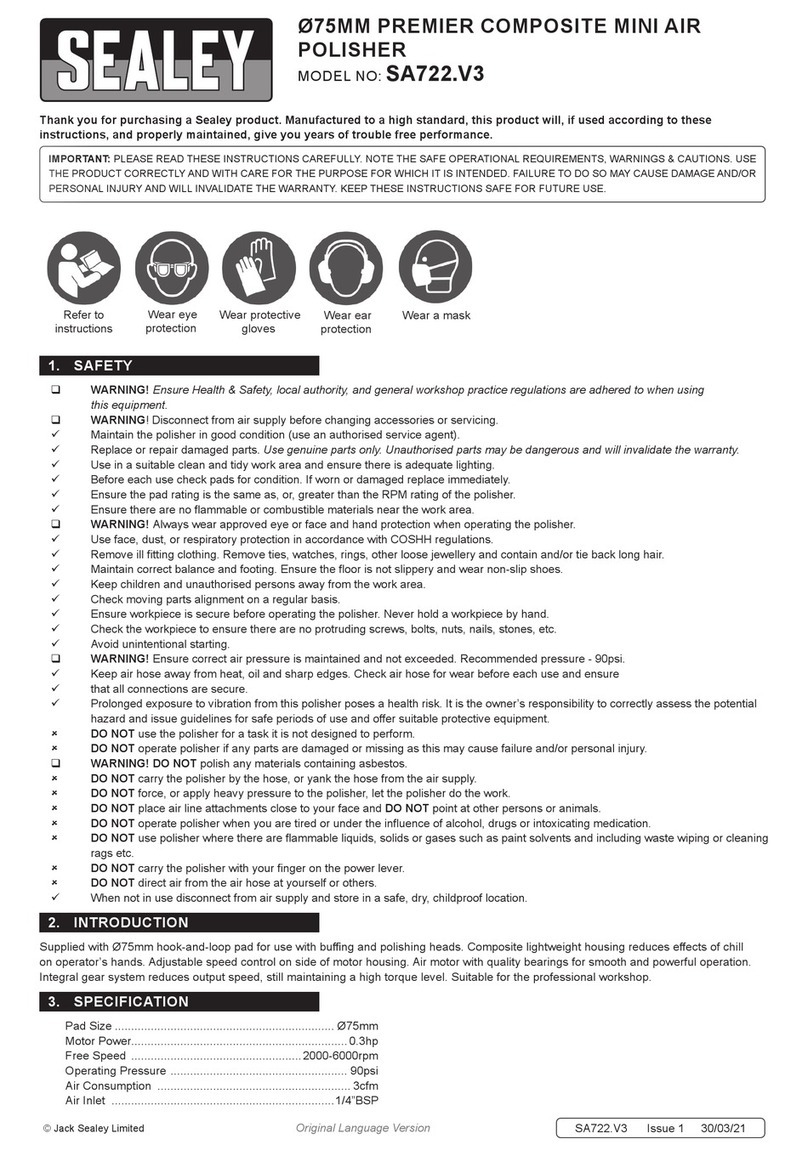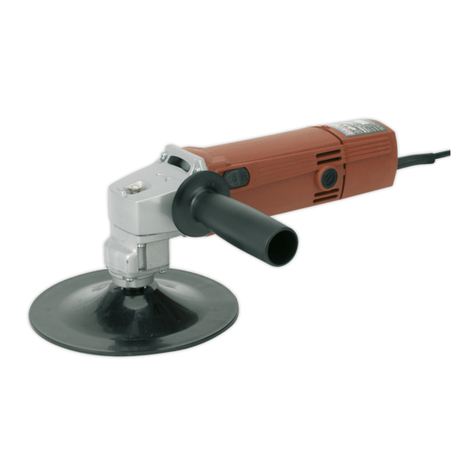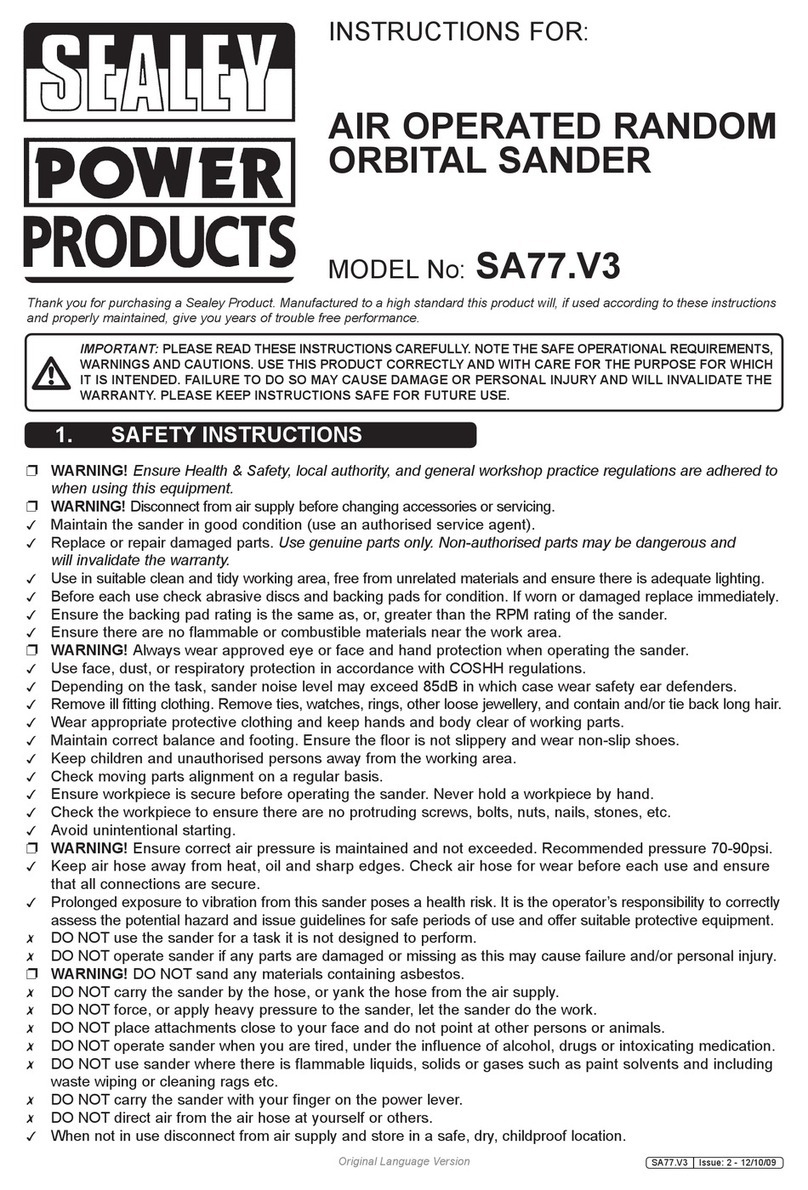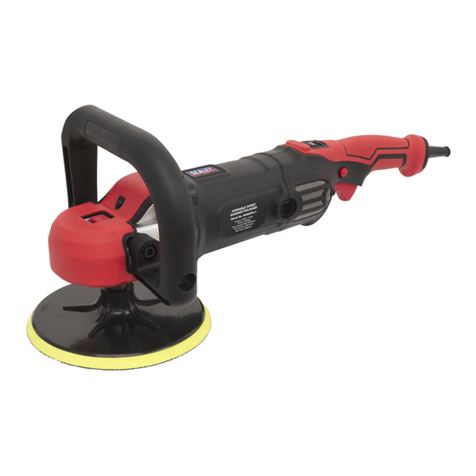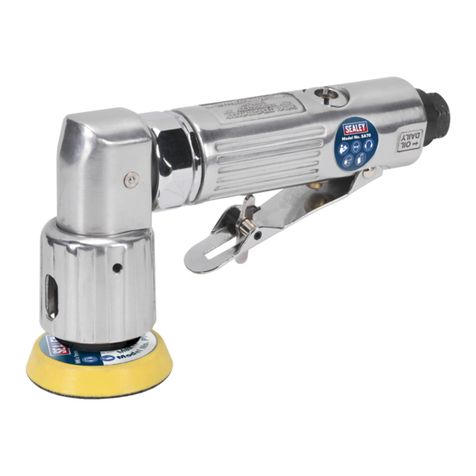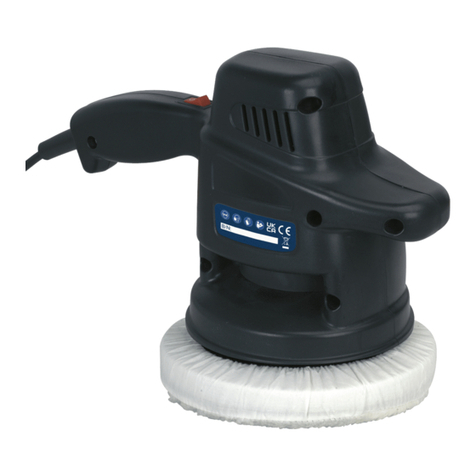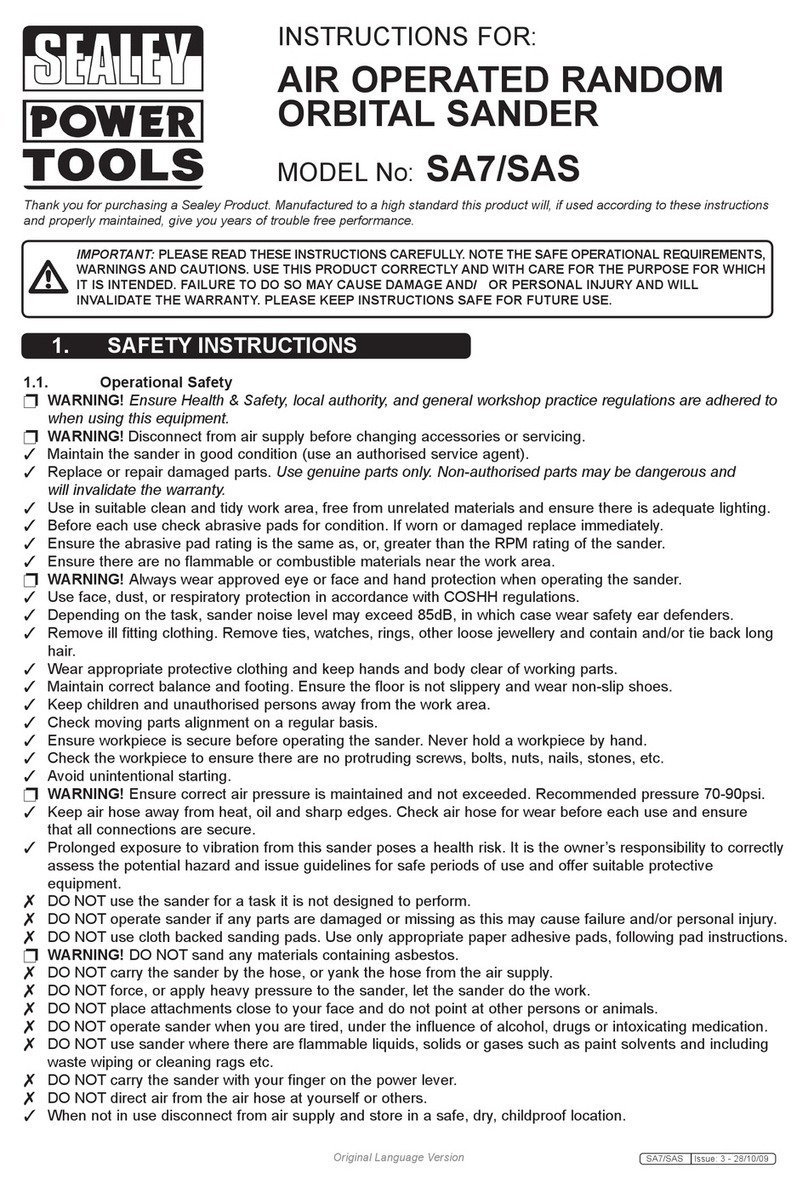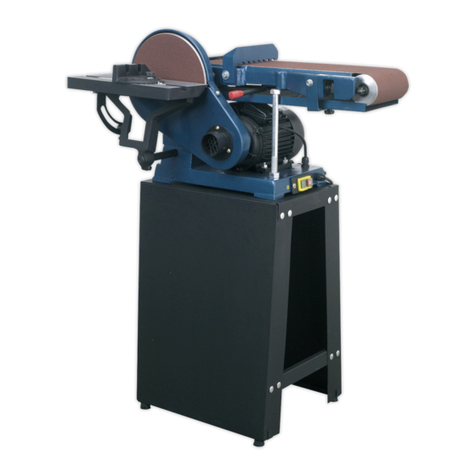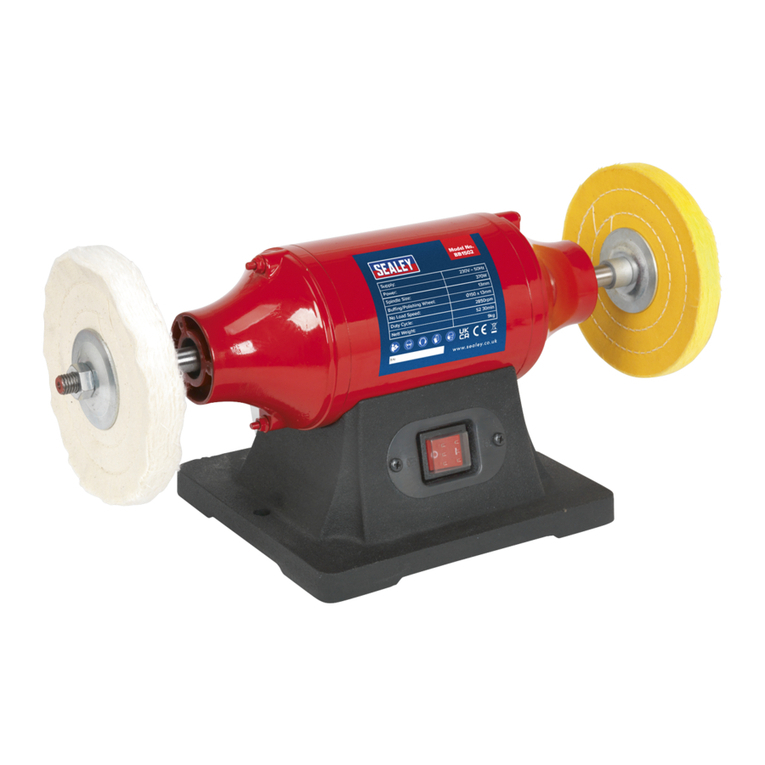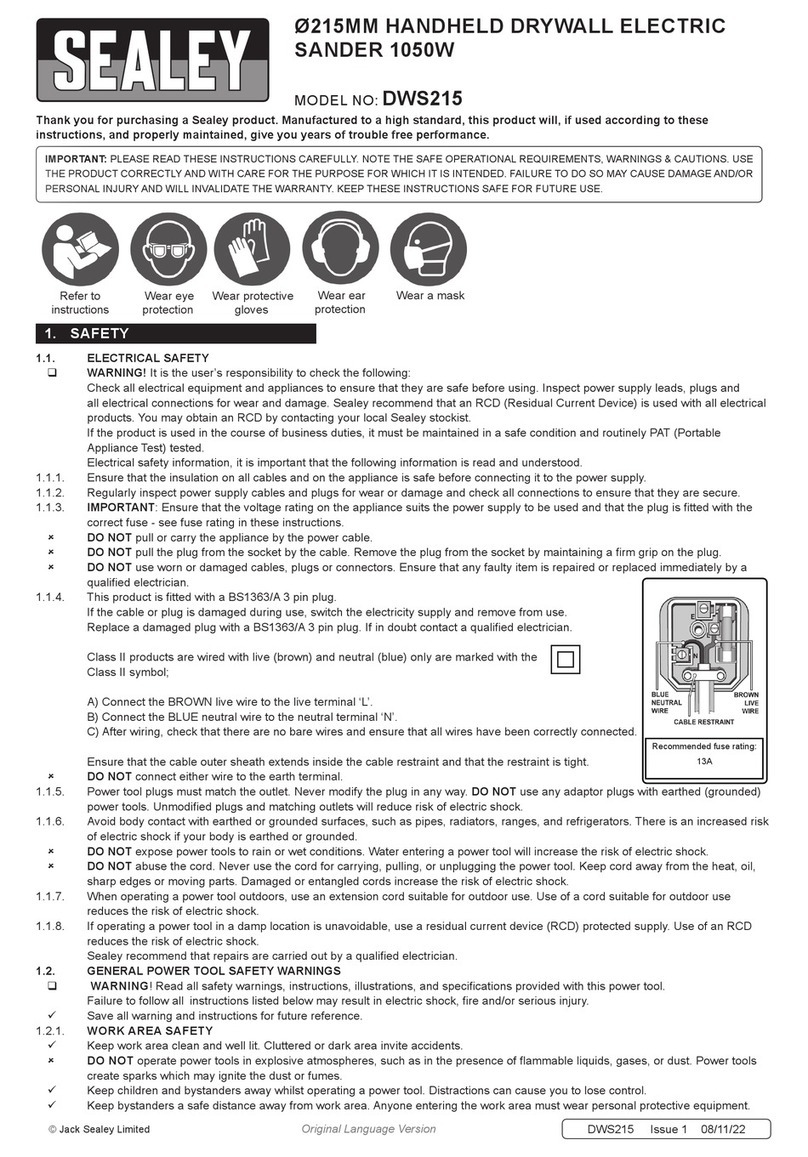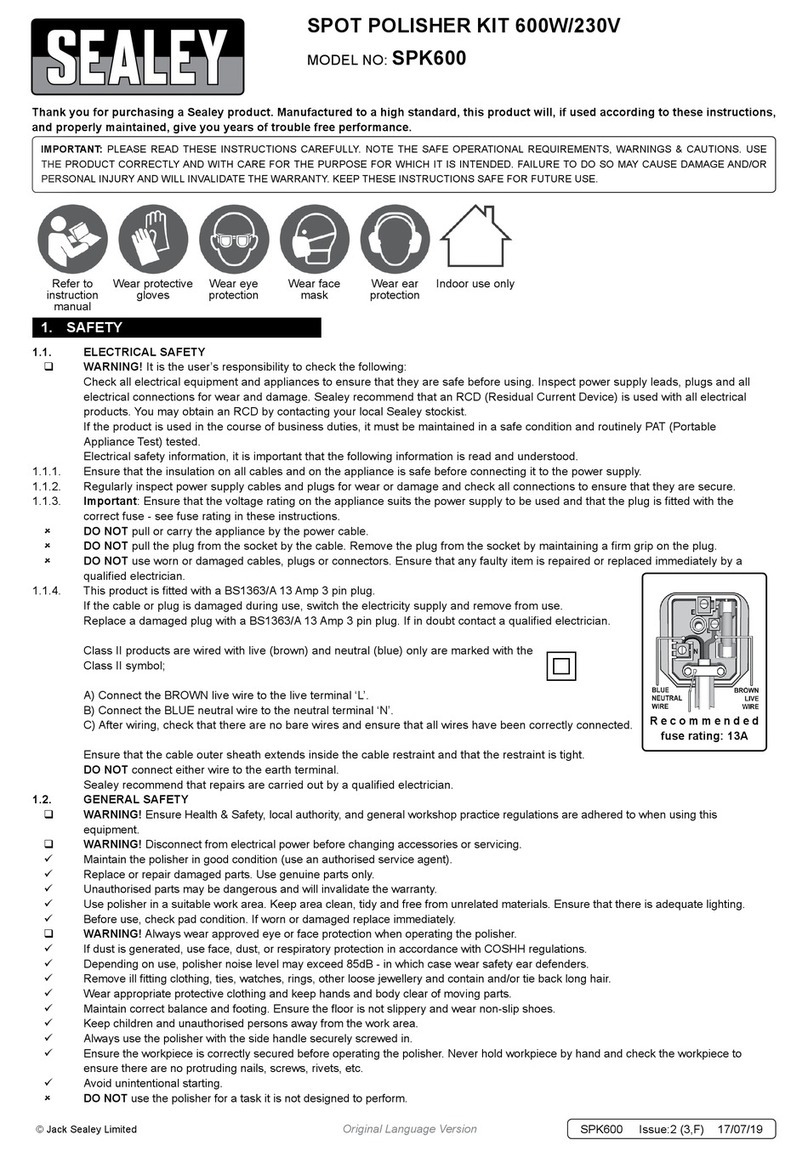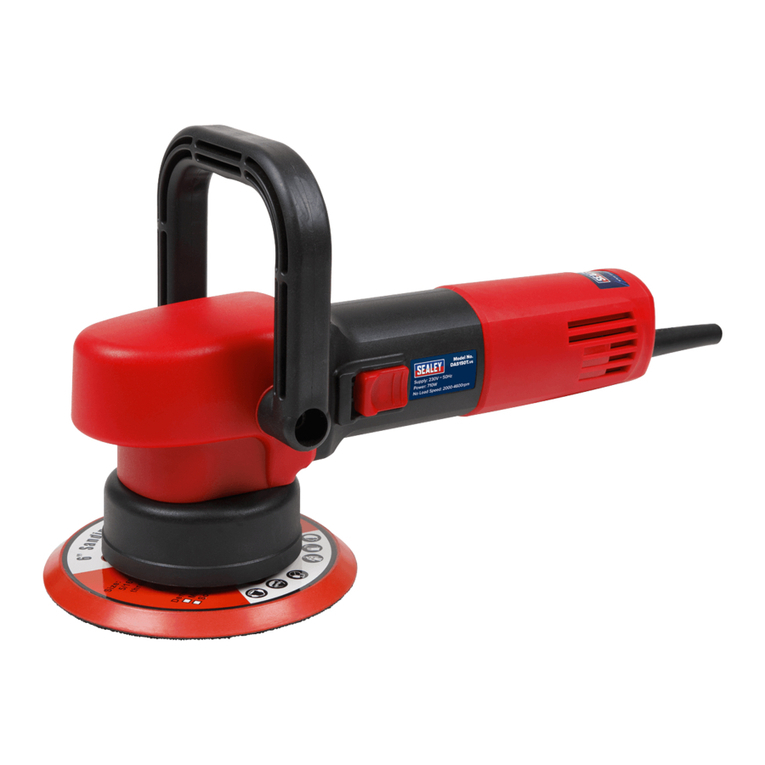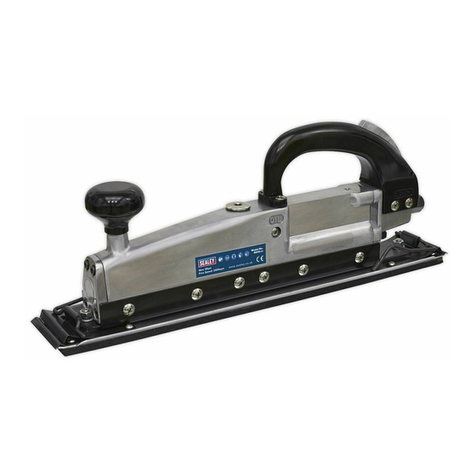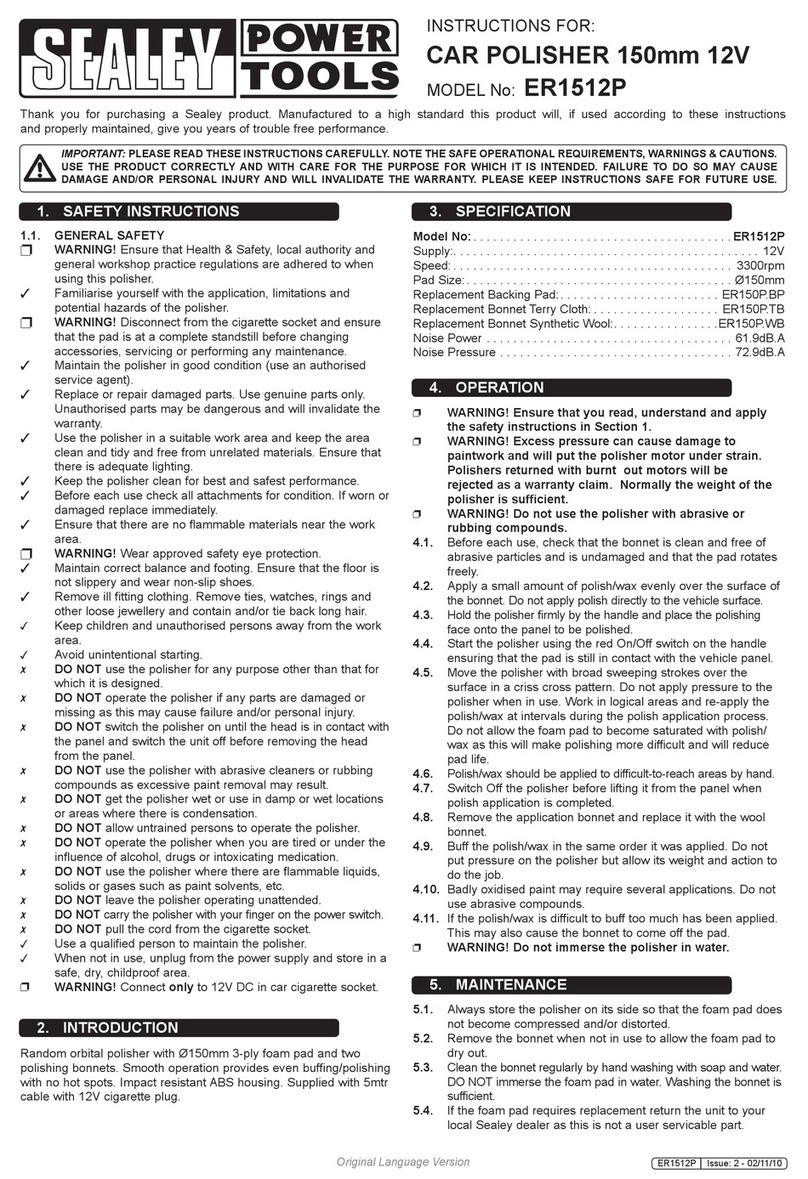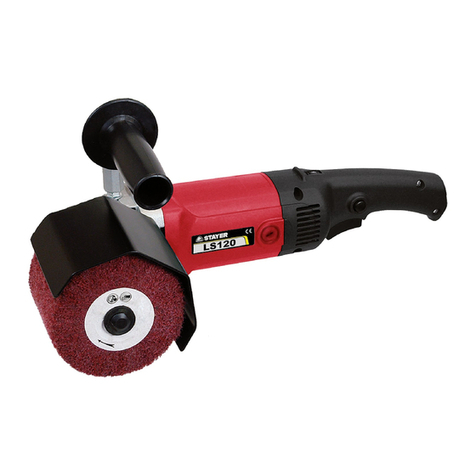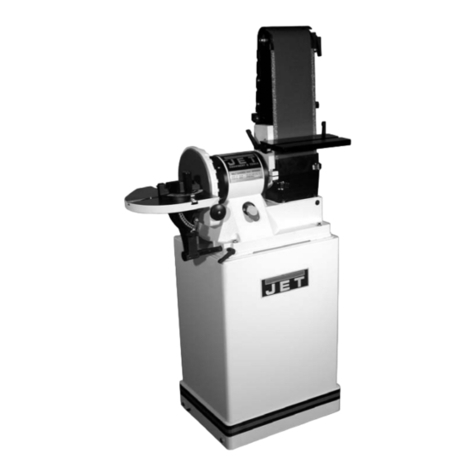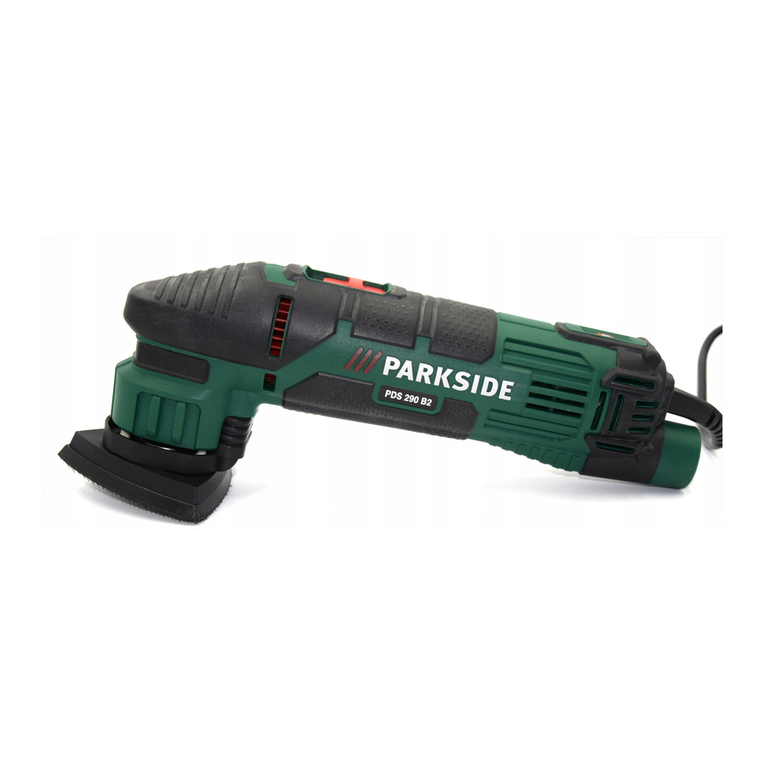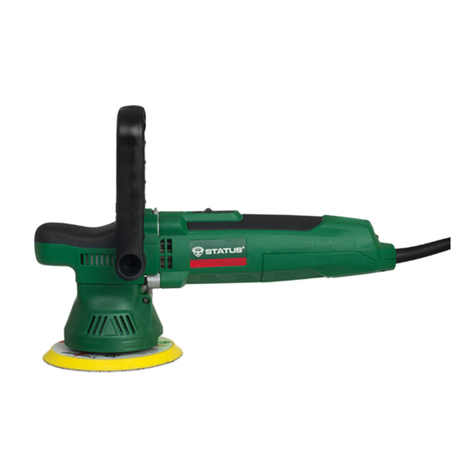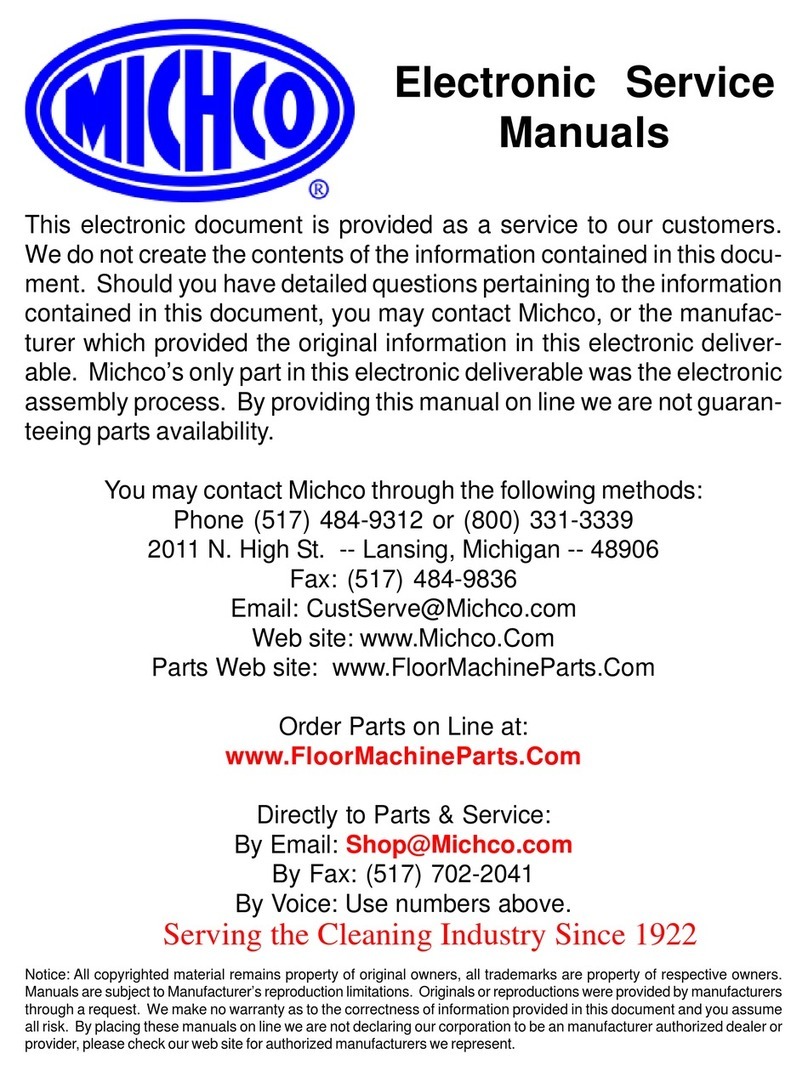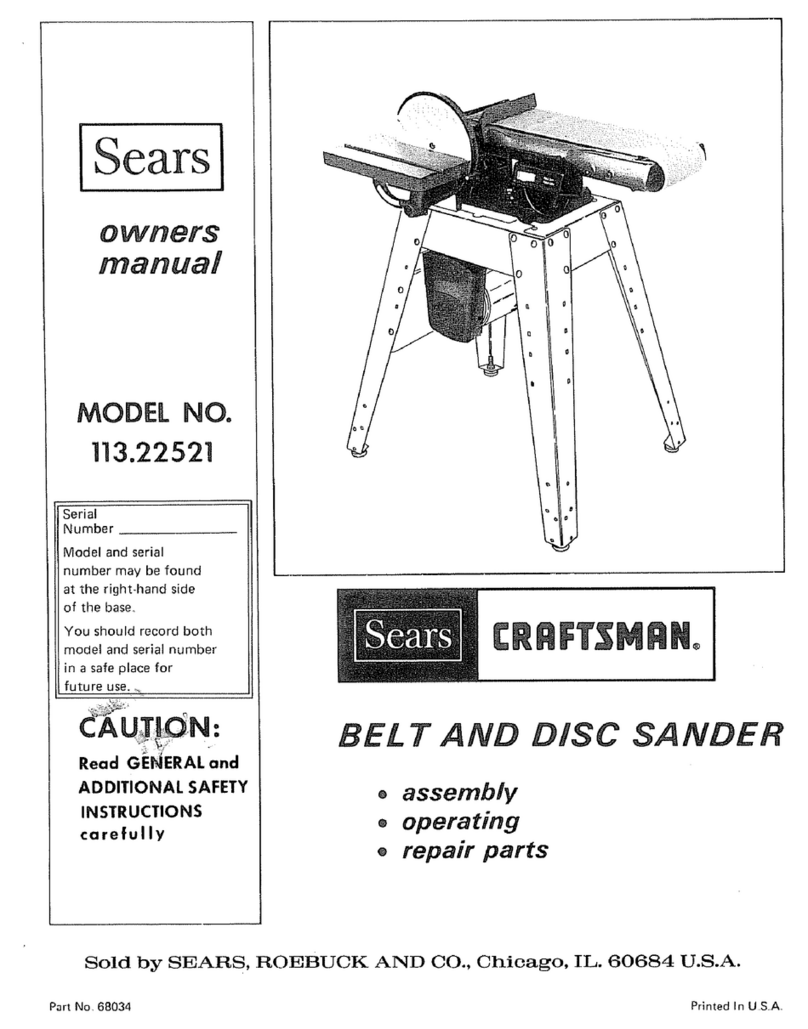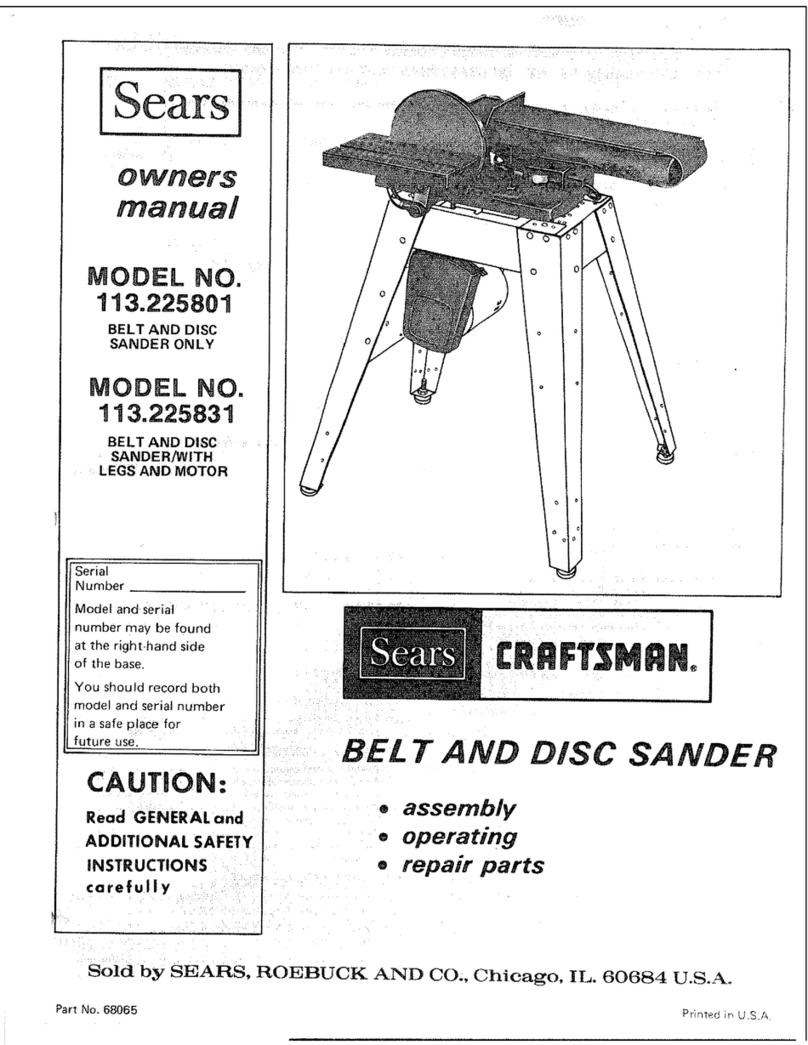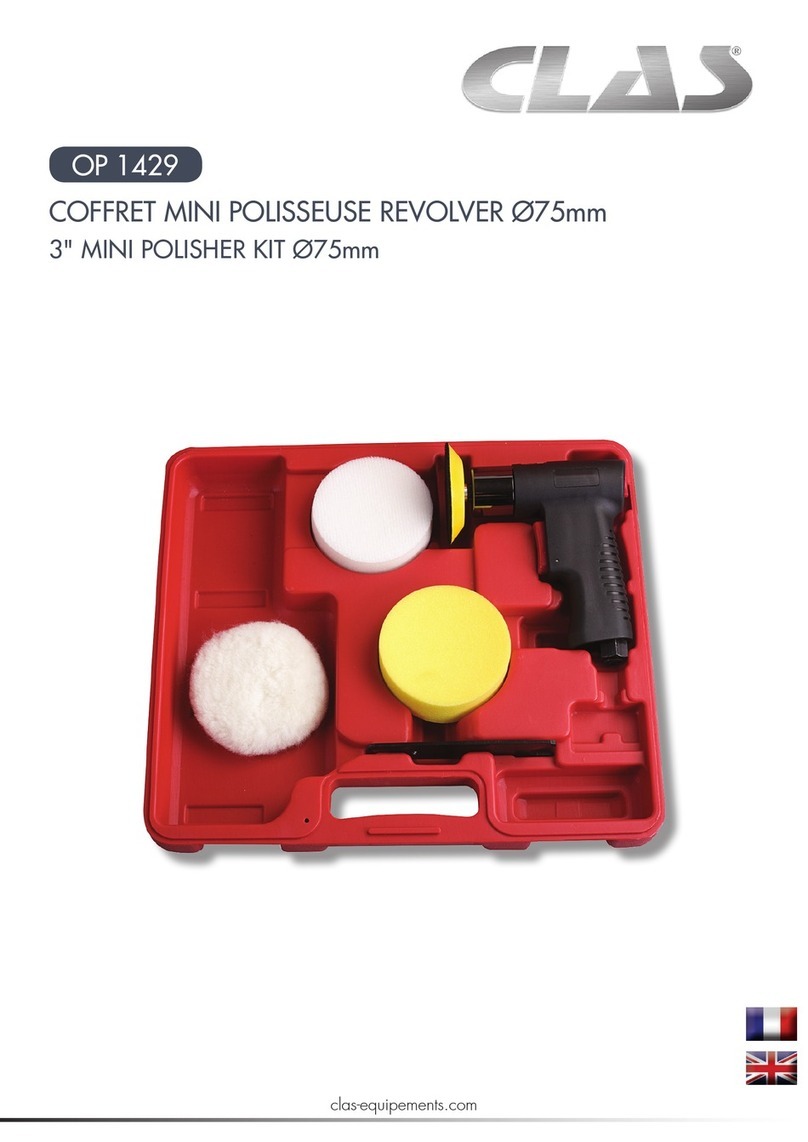
1.2 GENERAL SAFETY
WARNING! Ensure Health & Safety, local authority, and general workshop practice regulations are adhered to when using this equipment.
Familiarise yourself with the application and limitations of the product, as well as the specific potential hazards peculiar to the polisher.
WARNING!Disconnect from the mains power and ensure the disc is at a complete standstill before changing accessories, servicing
or performing any maintenance.
Maintain the polisher/sander in good condition (use an authorised service agent).
Replace or repair damaged parts. Use genuine parts only. Non-authorised parts may be dangerous and will invalidate the warranty.
WARNING! Keep all guards and holding screws in place, tight and in good working order. Check regularly for damaged parts. A guard or
any other part that is damaged must be repaired/replaced before the tool is next used.
Locate polisher/sander in a suitable working area, keep area clean and tidy and free from unrelated materials. Ensure there is adequate lighting.
Keep the polisher/sander clean for best and safest performance.
Before each use check abrasive attachments for condition. If worn or damaged replace immediately.
Ensure there are no flammable or combustible materials near the work area.
WARNING!Wear approved eye safety protection, ear defenders and, if dust is generated,
respiratory protection.
Maintain correct balance and footing. Ensure the floor is not slippery and wear non-slip shoes.
Remove ill fitting clothing. Remove ties, watches, rings, and other loose jewellery, and contain
and/ or tie back long hair.
Keep children and unauthorised persons away from the working area.
Secure non-stable work piece with a clamp, vice or other adequate holding device.
Remove adjusting keys and wrenches from the machine and its vicinity before turning it on.
DO NOT use equipment for any purpose other than that for which it is designed.
DO NOT operate the polisher/sander if any parts are damaged or missing as this may cause failure or possible personal injury.
1.1. ELECTRICAL SAFETY.
WARNING! It is the user’s responsibility to read, understand and comply with the following:
You must check all electrical equipment and appliances to ensure they are safe before using. You must inspect power supply leads, plugs and
all electrical connections for wear and damage. You must ensure the risk of electric shock is minimised by the installation of appropriate safety
devices. An RCCB (Residual Current Circuit Breaker) should be incorporated in the main distribution board. We also recommend that an RCD
(Residual Current Device) is used with all electrical products. It is particularly important to use an RCD with portable products that are plugged
into an electrical supply not protected by an RCCB. If in doubt consult a qualified electrician. You may obtain a Residual Current Device by
contacting your Sealey dealer. You must also read and understand the following instructions concerning electrical safety.
1.1.1. The Electricity At Work Act 1989 requires all portable electrical appliances, if used on business premises, to be tested by a
qualified electrician, using a Portable Appliance Tester (PAT), at least once a year.
1.1.2. The Health & Safety at Work Act 1974 makes owners of electrical appliances responsible for the safe condition of the appliance and
the safety of the appliance operator. If in any doubt about electrical safety, contact a qualified electrician.
1.1.3. Ensure the insulation on all cables and the product itself is safe before connecting to the mains power supply. See 1.1.1. & 1.1.2.
above and use a Portable Appliance Tester (PAT).
1.1.4. Ensure that cables are always protected against short circuit and overload.
1.1.5. Regularly inspect power supply, leads, plugs for wear and damage and all electrical
connections to ensure that none is loose.
1.1.6. Important: Ensure the voltage marked on the product is the same as the electrical
power supply to be used and check that plugs are fitted with the correct capacity fuse.
A 13 amp plug may require a fuse smaller than 13 amps for certain products
(subject 1.1.10. below), see fuse rating at right.
1.1.7. DO NOT pull or carry the powered appliance by its power supply lead.
1.1.8. DO NOT pull power plugs from sockets by the power cable.
1.1.9. DO NOT use worn or damaged leads, plugs or connections. Immediately replace or
have repaired by a qualified electrician. A UK 3 pin plug with ASTA/BS approval is fitted.
In case of damage, cut off and fit a new plug according to the following instructions (discard
old plug safely).
(UK only - see diagram at right). Ensure the unit is correctly earthed via a three-pin plug.
a) Connect the GREEN/YELLOW earth wire to the earth terminal ‘E’.
b) Connect the BROWN live wire to live terminal ‘L’.
c) Connect the BLUE neutral wire to the neutral terminal ‘N’.
After wiring, check there are no bare wires, that all wires have been correctly
connected, that cable outer insulation extends beyond the cable restraint and that the restraint is tight.
Double insulated products are often fitted with live (BROWN) and neutral (BLUE) wires only. Double insulated products are always
marked with this symbol . To re-wire, connect the brown & blue wires as indicated above. DO NOT connect the brown or blue
to the earth terminal.
1.1.10. Cable extension reels. When a cable extension reel is used it should be fully unwound before connection. A cable reel with an RCD
fitted is recommended since any product which is plugged into the cable reel will be protected. The section of the cores of the cable
is important. We suggest 1.5mm2section as a minimum but to be absolutely sure that the capacity of the cable reel is suitable for this
product and for others that may be used in the other output sockets, we recommend the use of 2.5mm2section cable.
NOTE: The MS900PS has an electronic speed control, which requires a ‘clean’ and stable power supply. Normal 230V mains supply
is suitable. However, the output from many petrol driven generators may not be suitable for this tool. ‘Inverter’ type power
supplies provide a much more stable output, and should present no problem.
INSTRUCTIONS FOR:
SANDER / POLISHER 170mm 6 SPEED 1300W 230V
MODEL NO: MS900PS
Thank you for purchasing a Sealey product. Manufactured to a high standard this product will, if used according to these instructions
and properly maintained, give you years of trouble free performance.
1. SAFETY INSTRUCTIONS
IMPORTANT: PLEASE READ THESE INSTRUCTIONS CAREFULLY. NOTE THE SAFE OPERATIONAL REQUIREMENTS, WARNINGS & CAUTIONS.
USE THE PRODUCT CORRECTLY AND WITH CARE FOR THE PURPOSE FOR WHICH IT IS INTENDED. FAILURE TO DO SO MAY CAUSE
DAMAGE OR PERSONAL INJURY AND WILL INVALIDATE THE WARRANTY. PLEASE KEEP INSTRUCTIONS SAFE FOR FUTURE USE.
Original Language Version MS900PS Issue: 2(SP) - 16/01/13
Recommended Fuse
Rating 13Amp
© Jack Sealey Ltd
